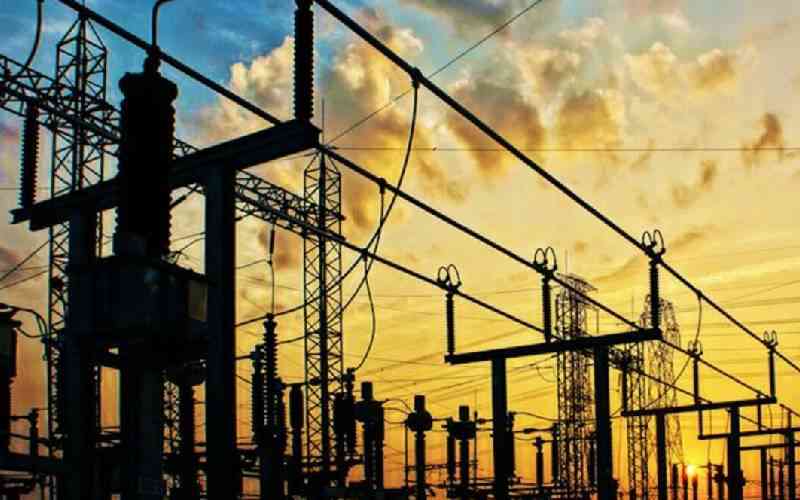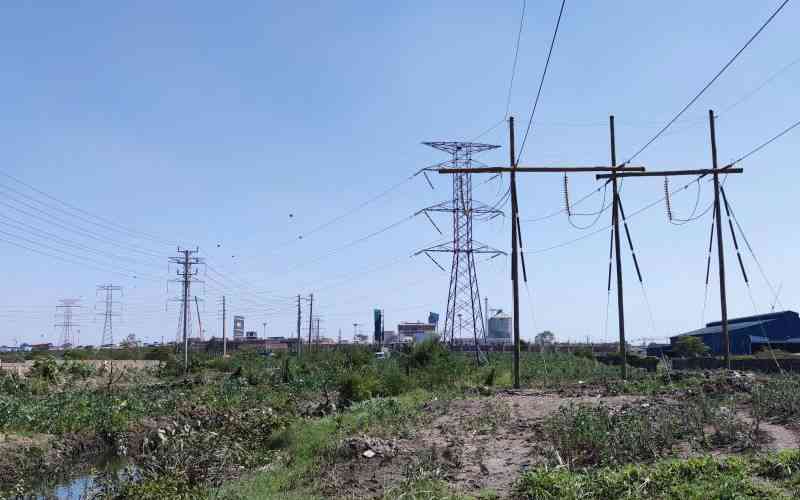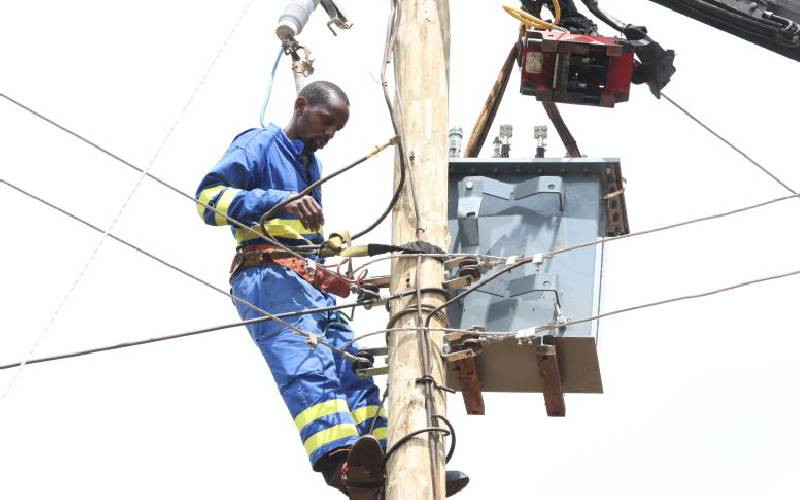By John Oyuke
Kenya Power and Lighting Company (KPLC) has sounded an alarm over a looming power crisis.
The company plans to install up to three 60-80 megawatt diesel-powered plants in a move likely to lead to another round of electricity tariff increases.
KPLC, the sole power transmitter said poor rainfall in the catchment areas for main hydroelectric power-generating dams has affected power generation.
 |
KPLC staff at work. The company says poor rainfall in the catchment areas has affected power generation. [PHOTO: FILE] |
It said contingency measures have to be taken to avoid rationing and disruption of power supply for domestic use and industrial activities.
KPLC said the least cost power development plan would have to be speeded up and the planned retirement of some 50MW of emergency power postponed.
"Negotiations are on to extend the contract for the 50MW, which would have been retired by end of next month, to avoid a shortage of electricity, with its attendant rationing," it said in a statement.
KPLC said the long rains have remained inadequate, and the water level at Masinga, the mother dam of the Seven Forks hydropower project from where about 47 per cent of the country’s electricity is supplied — remains at 1,037.84.
optimal generation
This level, it added, is compared to a full dam level of 1,056.50 and a minimum level of 1,037, below which optimal generation is greatly compromised.
KPLC announced on Friday that to avoid electricity shortfalls, it is looking for power firms to install up to three 60-80MW medium speed diesel power plants to be operational by next year.
It invited expressions of interest for the development of the diesel power plants in the Athi River area or elsewhere in Nairobi and its environs. The power from the plants would be fed into the national grid.
The plants, which will become operational next year are included in the long-term least cost national power plan.
Stay informed. Subscribe to our newsletter
KPLC said the plants have a short implementation lead time and would thus meet the immediate shortfall gap as other plants based on sources like coal, geothermal and wind are implemented.
KPLC statistics show the interconnected capacity is 1,331 MW against an effective capacity of 1,245 MW. The effective capacity comprises 692MW hydropower, 163MW geothermal and 390MW thermal, which includes 146MW of the emergency capacity.
KPLC explained that in December last year, it recorded a peak demand of 1,072MW, leaving a reserve capacity of below five per cent as compared to the desirable 15 per cent required to take care of planned and unplanned system outages.
It estimates that the peak demand is suppressed by 100 MW and would rise to 1,172 MW if there was adequate capacity to meet demand.
KPLC said though the country’s electricity access is fast rising, it still remains low at 18 per cent and is planned to increase to 40 per cent by 2020.
According to the national power development plan, ongoing and committed power generation projects will inject an additional 1,623 MW in the period between next year and 2015 against a forecast demand of 2,242 by 2015.
 The Standard Group Plc is a
multi-media organization with investments in media platforms spanning newspaper
print operations, television, radio broadcasting, digital and online services. The
Standard Group is recognized as a leading multi-media house in Kenya with a key
influence in matters of national and international interest.
The Standard Group Plc is a
multi-media organization with investments in media platforms spanning newspaper
print operations, television, radio broadcasting, digital and online services. The
Standard Group is recognized as a leading multi-media house in Kenya with a key
influence in matters of national and international interest.
 The Standard Group Plc is a
multi-media organization with investments in media platforms spanning newspaper
print operations, television, radio broadcasting, digital and online services. The
Standard Group is recognized as a leading multi-media house in Kenya with a key
influence in matters of national and international interest.
The Standard Group Plc is a
multi-media organization with investments in media platforms spanning newspaper
print operations, television, radio broadcasting, digital and online services. The
Standard Group is recognized as a leading multi-media house in Kenya with a key
influence in matters of national and international interest.










